Top 20 Restaurant Lighting Ideas in 2025
Table of Contents
Creating an inviting and captivating atmosphere in your restaurant is just as important as perfecting the recipes on your menu. The ambiance can be the element that distinguishes your establishment from the competition, turning first-time visitors into loyal customers. One crucial component in setting this all-important mood is your choice of lighting. It’s not merely functional but a powerful design element that can influence customer experience and even food perception.
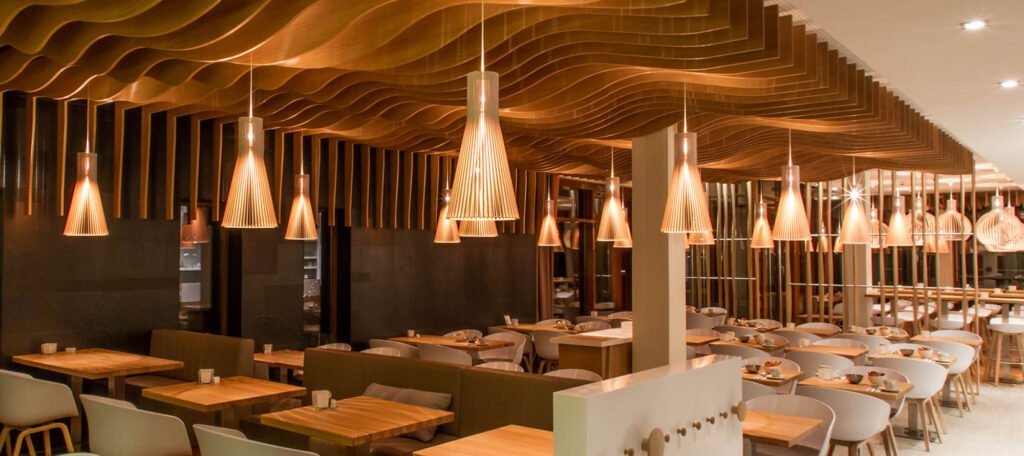
In this article, I’ve shared the top 20 restaurant lighting ideas that can illuminate your establishment’s character and enhance its appeal. From contemporary chic to a rustic charm, these diverse lighting concepts cater to various restaurant themes and atmospheres, each capable of transforming the dining experience into a memorable affair. Get ready to shed some light on your space’s potential, and watch as the right lighting turns your restaurant into a crowd magnet.
Adequate lighting elevates the restaurant’s aesthetics and improves the dining experience. The design possibilities are infinite, ranging from sophisticated chandeliers to playful pendant lights that comprise the restaurant’s lighting concept.
This piece presents 20 top-notch restaurant lighting ideas, which will spark inspiration and assist in crafting an enticing atmosphere for your clientele. Take your establishment’s interior design a notch higher through strategic lighting.
Classifications of Restaurant Lighting
There’s a broad spectrum of lighting categories, but the following are the standout types you’ll find in any restaurant:
A. Ambient Lighting
The restaurant’s primary light source creates the overall illumination and setting of the ambiance. Ensuring uniform distribution across the area prevents overly bright or dark corners. Typical ambient lighting sources include ceiling-mounted fixtures, wall sconces, LED strip cove lighting, or recessed lights. Further, the color temperature and brightness of the ambient lighting can significantly influence the restaurant’s atmosphere.
B. Task Lighting
Task lighting serves the specific purpose of lighting up areas where particular tasks are performed, such as reading the menu or food preparation in the kitchen. It should provide enough brightness for clear visibility without causing any discomfort or glare. Common examples of task lighting include under-cabinet lighting in the kitchen, table lamps, and pendant lights above tables.
C. Accent Lighting
Accent lighting emphasizes certain aspects or zones within a restaurant, such as artwork, a bar, or a particular focal point. This type of lighting can produce a dramatic impact and introduce depth and texture to the restaurant’s design. Track lighting, spotlights, and uplights, commonly used for accent purposes, are typically positioned at the base of plants or other decorative elements.
The Role of Lighting in Defining Your Restaurant’s Ambiance
The lighting style in your restaurant or bar can significantly influence its atmosphere, either attracting customers or discouraging them, based purely on your chosen aesthetic.
Dim Lighting
Dimmed lights often cultivate a serene and romantic ambiance, encouraging customers to spend more time at your venue. Imagine a formal restaurant illuminated by a candlelit dinner. These settings commonly feature adjustable overhead lights and ample accent lighting. The subdued lighting fosters a sense of intimacy, with strategically placed brighter spots over dining tables or the bar area, which makes customers feel more secluded from the remaining guests.
Remember that even in low-lit conditions, it’s crucial to maintain sufficient ambient light to ensure basic tasks can be carried out safely and effortlessly.
Vivid Lighting
Intense lighting creates a more stimulating environment than dimmed lighting, keeping your patrons lively and attentive. It benefits vibrant establishments like juice bars, cafes, or family-friendly eateries. You can achieve such lighting through large windows that admit natural sunlight or through high-intensity overhead lighting fixtures.
Tailoring Lighting
As you design your establishment’s lighting plan, consider the ambiance you aim to create throughout the day. What are your operating hours? For instance, a diner or pancake house bustling during breakfast hours would need different lighting than a fine-dining restaurant aimed at romantic dinners. If your establishment serves multiple meals a day, adjusting your lighting for different meal services may be worthwhile.
- Breakfast – Morning meal services should feature bright lighting to help customers wake up and comfortably read their newspapers over coffee. Natural light is the most suitable source for this purpose.
- Lunch – For the midday rush, opt for moderate lighting levels. This works particularly well for fast-food joints and convenience stores where customers often grab quick meals rather than sit down. Thoughtful lighting can also foster higher turnover rates, facilitating swift customer flow, which is crucial if your lunch service is the busiest time of the day.
- Dinner – Restaurants primarily catering to the dinner crowd aim to create a calming ambiance, irrespective of the establishment’s casual or upscale nature. Dinner is a popular time for dining out, as patrons unwind after their day. By offering a tranquil environment, you can encourage guests to stay longer, potentially leading to higher spending on food, beverages, and desserts, thus boosting your profits.
Lighting Ideas for Restaurants
The restaurant’s illumination should be tailored to its style. For instance, the lighting scheme for a high-end dining establishment would be distinct from that of a fast-food joint. Moreover, different zones within a restaurant necessitate unique lighting designs. Here are some innovative concepts for each restaurant zone to inspire you. The entrance and exterior of a restaurant are crucial to creating a compelling first impression. Here are some illuminating ideas for these zones:
1. Facade Texturing through Wall Grazing
Wall grazing is an effective method for emphasizing the facade’s texture. This technique places lights near a wall, creating a grazing effect that accentuates the wall’s texture and color. Ground recessed or flood lights are suitable for wall grazing, adding a visually intriguing element to your restaurant’s exterior, whether plain or textured.
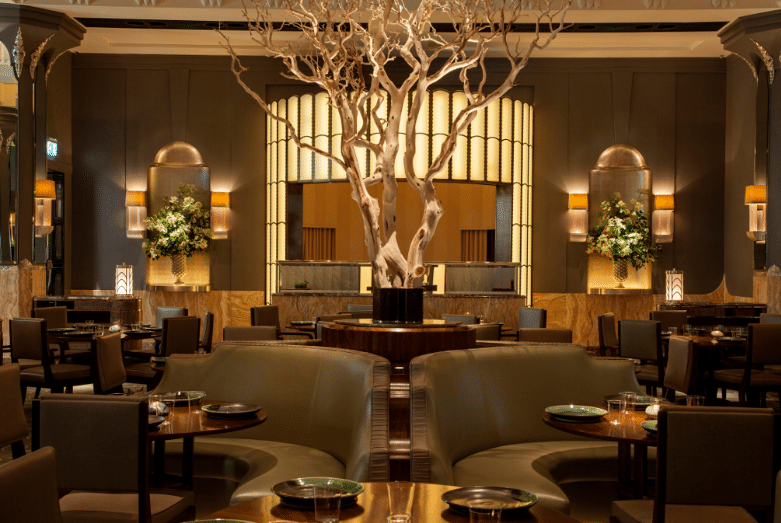
2. LED Strips for Facade Enhancement
LED strips are flexible lighting solutions that produce various effects, such as backlighting, outlining, and highlighting. You can install them easily on the facade or under the eaves, creating a welcoming atmosphere.
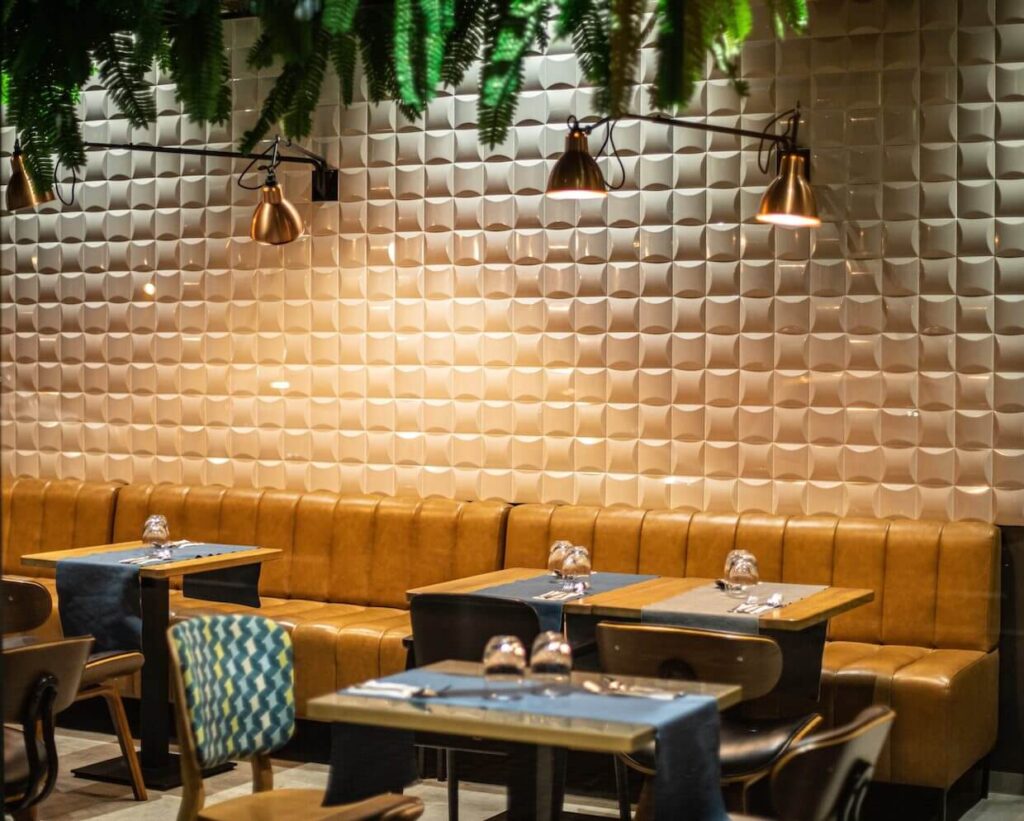
Proper lighting is essential in the kitchen and work areas to maintain safety and efficiency. Bright, even lighting enables staff to see food items, equipment, and ingredients clearly, minimizing the risk of accidents or errors.
3. Task Lighting in Work Stations
Task lighting is indispensable in the kitchen and work areas. It offers concentrated and intense illumination for specific workstations. Task lighting fixtures, such as pendants, under-cabinet lights, and track lights, are perfect for areas where food is prepared or served.
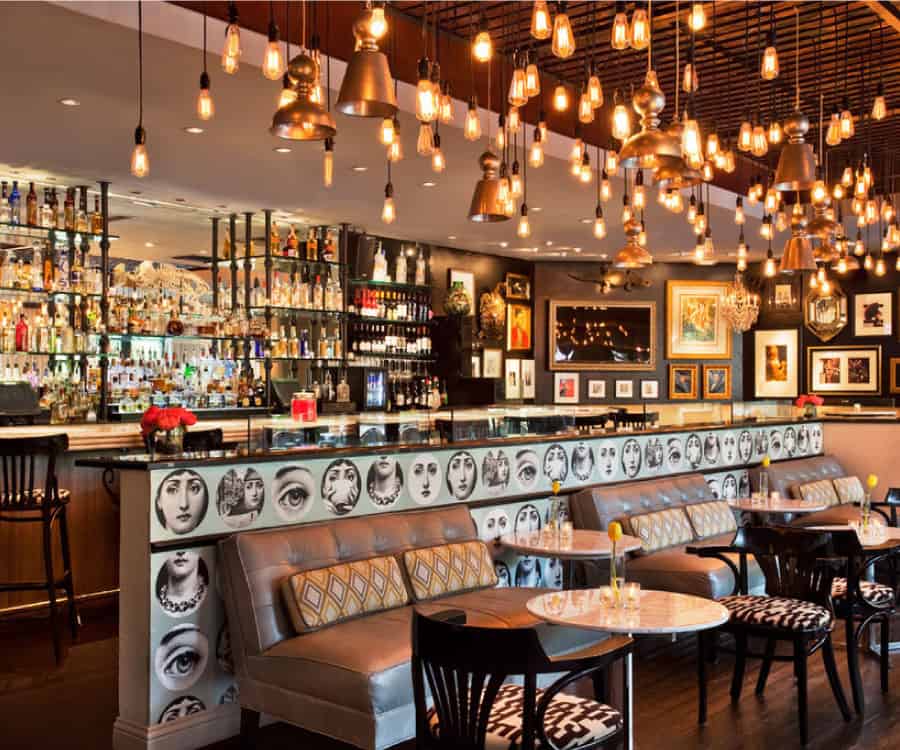
4. Dimmable Lights for the Kitchen
Dimmer controls allow staff to modify the lighting intensity as needed, fostering a comfortable and personalized working environment. Dimmers can be particularly beneficial during prep work, with lower lighting levels reducing eye strain.
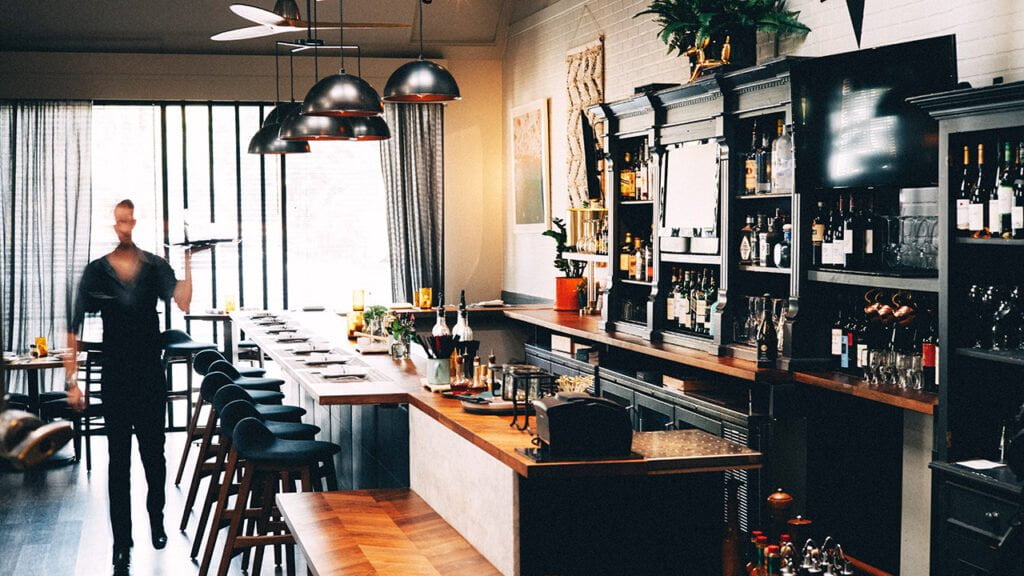
Lighting is pivotal in creating the mood and ambiance in a restaurant or bar. It can foster an inviting, cozy atmosphere that encourages patrons to linger and return. Here are some lighting concepts for the bar area:
5. Illuminating the Bar Station
The bar station is typically a restaurant’s focal point, so it’s vital to light it properly. Install LED strips to showcase the bottles and glasses, and use warm lights to create a cozy bar atmosphere. You might also consider RGB lighting for a fun bar theme.
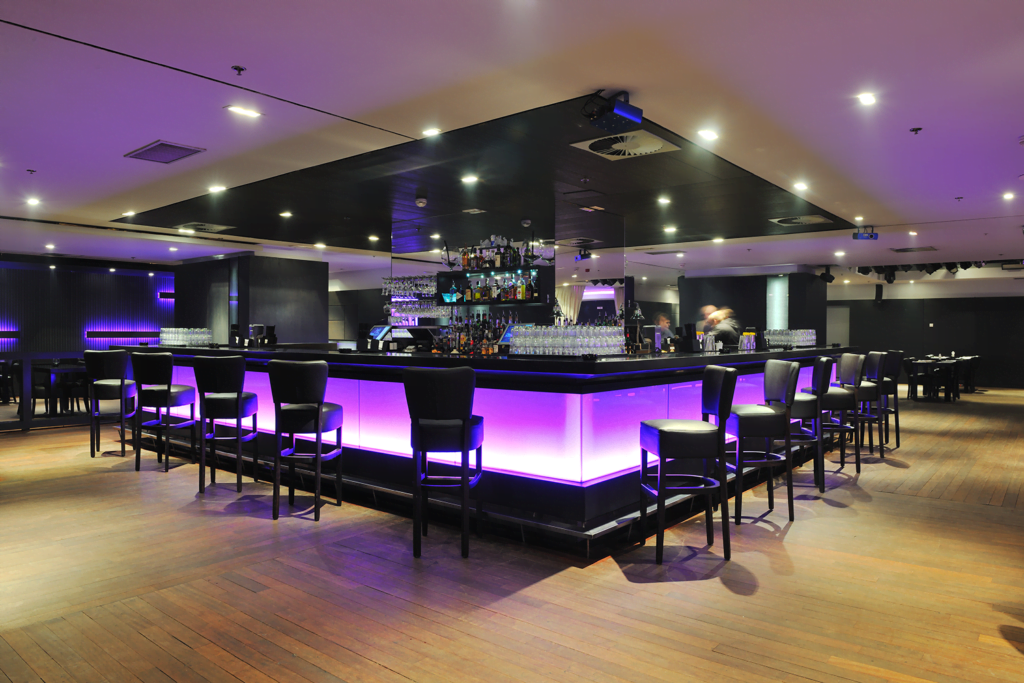
6. Crafting a Low-Key Atmosphere
Bars are meant to be places for relaxation and unwinding. However, inappropriate lighting can disrupt the overall ambiance. Employ a variety of light fixtures to preserve the bar’s cool vibe. Pendant lights and spotlights can add a touch of drama to your bar. Don’t be afraid to experiment with colors to keep your customers entertained. Consider using addressable LED strips for an added touch of creativity!
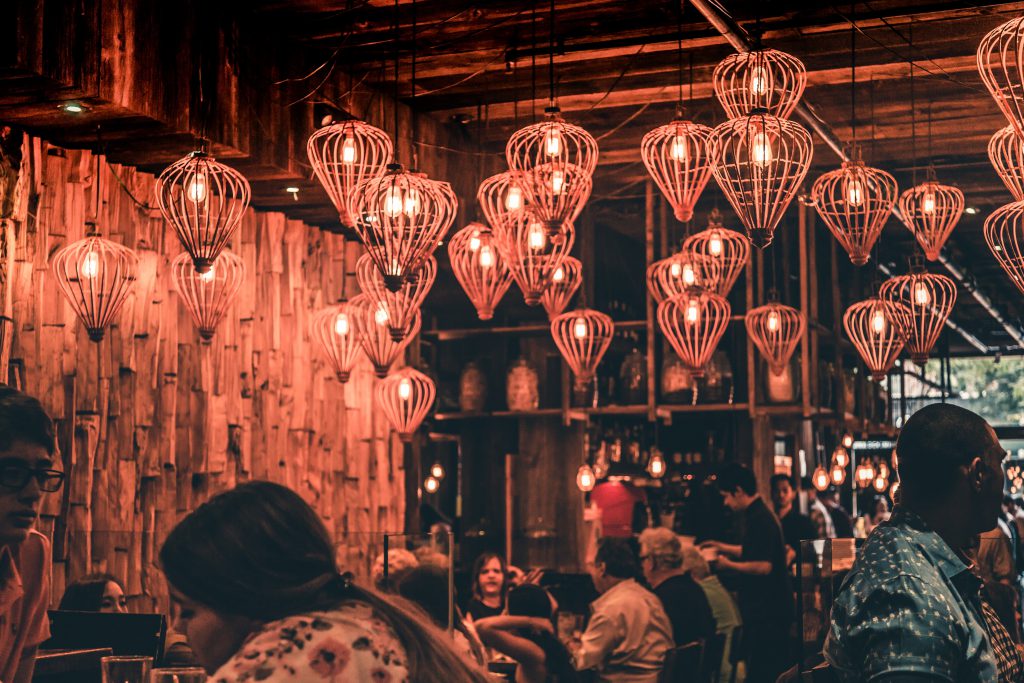
The restaurant logo is vital, serving as the visual identity of the establishment. Therefore, it’s essential to accentuate it appropriately.
7. Neon Signage for Logo Enhancement
Neon signage is an effective and trendy strategy for establishing a distinctive brand identity. These signs are conspicuous and visible from a distance, thus attracting potential patrons to your restaurant. The bright, colorful lights foster a warm, welcoming environment, tempting people to explore your culinary offerings.
However, traditional glass neon signs can be pricey. As an alternative, LED neon flex is an affordable, energy-efficient, and robust solution for logo creation. Their extreme flexibility allows you to mold and install them independently, making them a versatile tool for your branding needs.
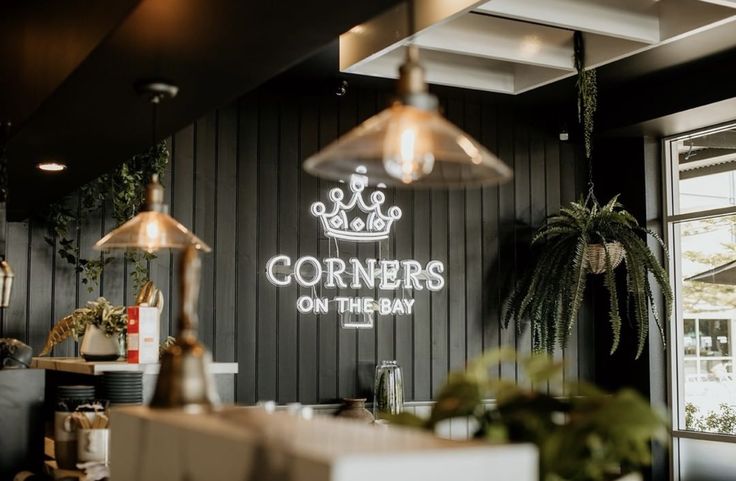
8. Spotlighting the Logo
Spotlighting can draw attention to the restaurant’s logo or name, even at night, adding an elegant flair to the overall restaurant design.

Restaurateurs and interior decorators can ponder various enlightening concepts. Adequate illumination can foster a cozy, inviting ambiance in the dining area. Below are some prevalent concepts for dining room illumination:
9. Make a Statement with Lighting in the Dining Space
Pendant fixtures and chandeliers can be fantastic statement pieces in a dining area. They come in an array of styles, dimensions, and color palettes. They can generate a sense of luxury and elegance, making them ideal for upscale dining establishments.
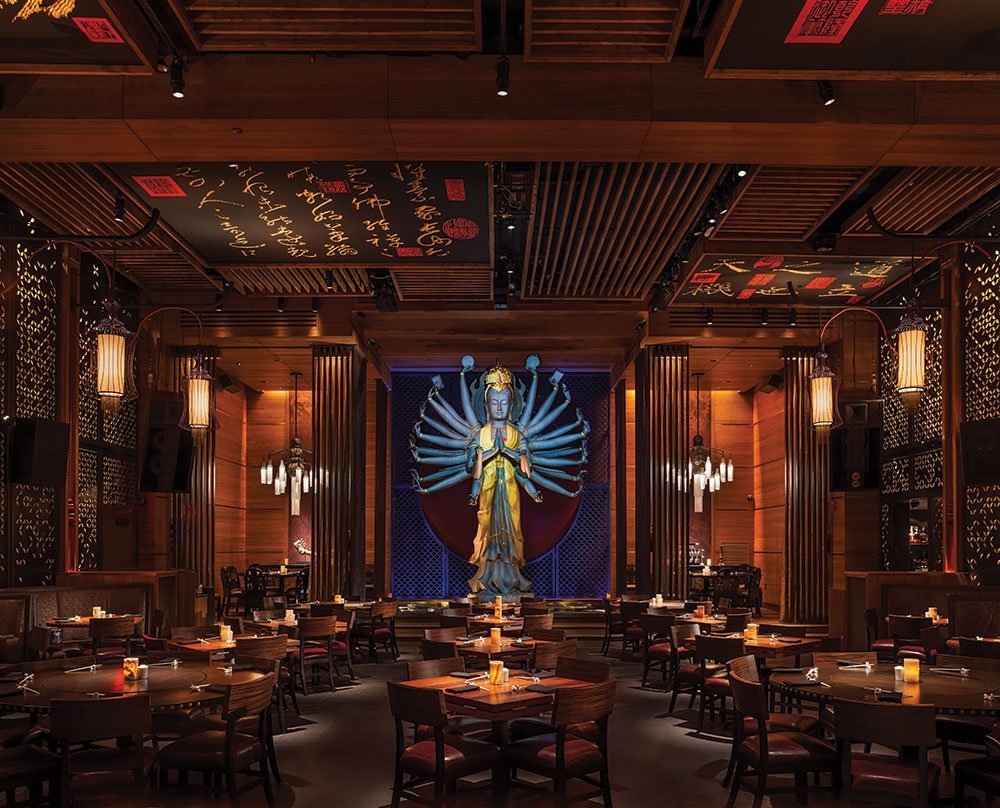
10. Incorporate Wall Sconces in the Dining Zone
Wall sconces can effectively supplement the dining room with ambient illumination. They come in diverse styles and designs and can foster a soothing and hospitable atmosphere.
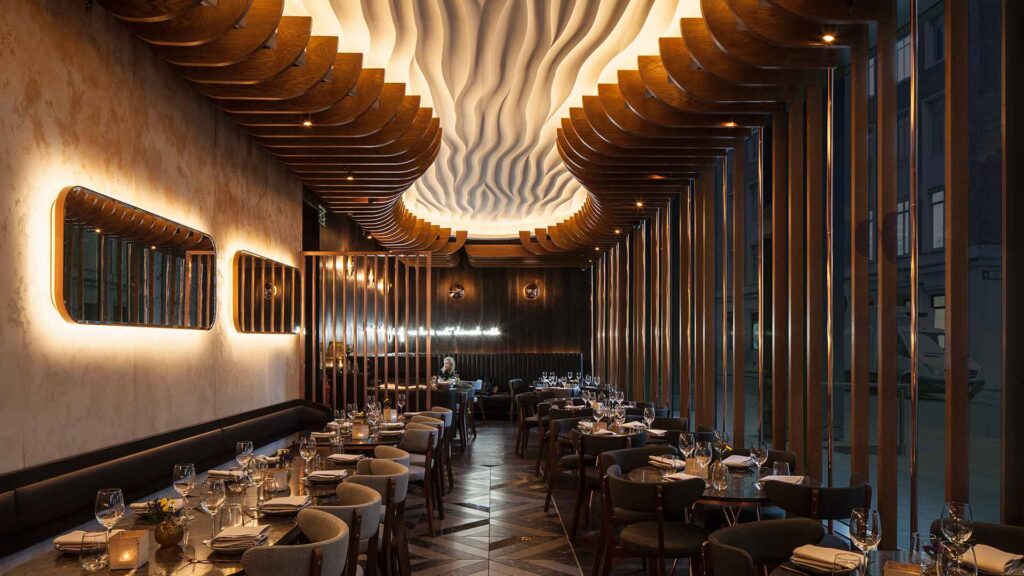
11. Introduce an Enchanting Aura with Fairy Lights
Fairy lights can be hung around the restaurant to create an enchanting, dreamy ambiance. They can be artfully arranged around centerpieces or draped overhead in a canopy formation across the dining area.

12. Opt for Intelligent Lighting Solutions
Intelligent lighting can revolutionize your dining area. They can be programmed to switch on and off at specific times, simplifying lighting management throughout the day. For instance, you can program the lights to illuminate at twilight and switch off at dawn automatically.
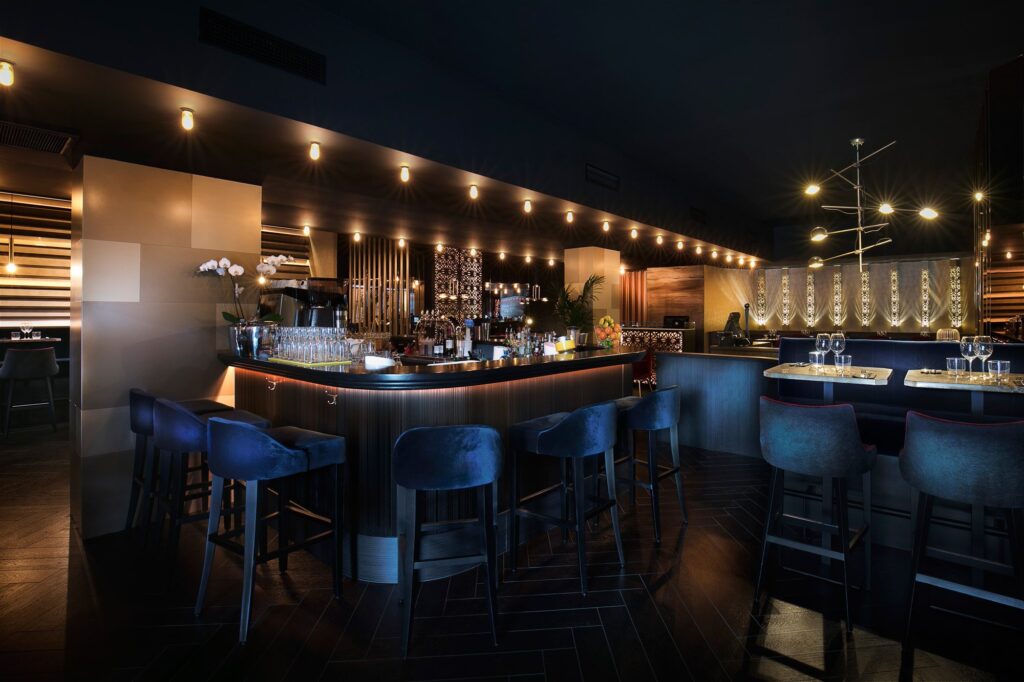
13. Align Your Lighting with Your Restaurant’s Theme
For theme-specific restaurants, lighting is a crucial aspect. Themes can range from the beach, gaming, floral, and more. Therefore, while illuminating your restaurant, remember to align with the theme. For example, using white, blue, or aquamarine hues in a seafood restaurant with a beach theme can evoke a calm, seaside atmosphere. Consider seashell-shaped shades or fixtures made from natural fibers. Conversely, a floral-themed restaurant would benefit from candlelight and chandeliers.
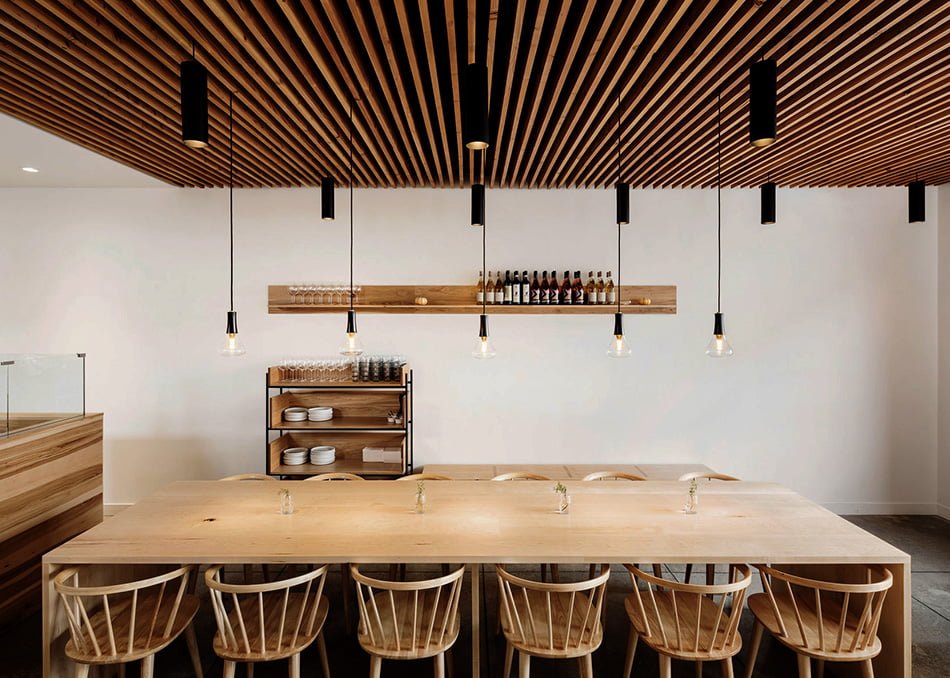
Service stations are vital, especially for fast-food establishments. They are where customers place orders and settle bills. Therefore, ensure that this area is properly lit. Here are a few splendid illumination ideas for your restaurant’s service area:
14. Implement Backlit Signage at the Service Counter
At the service counter, incorporate backlit signage showcasing your restaurant’s name or logo. This will enhance the sophistication of the service area and strengthen brand recognition.
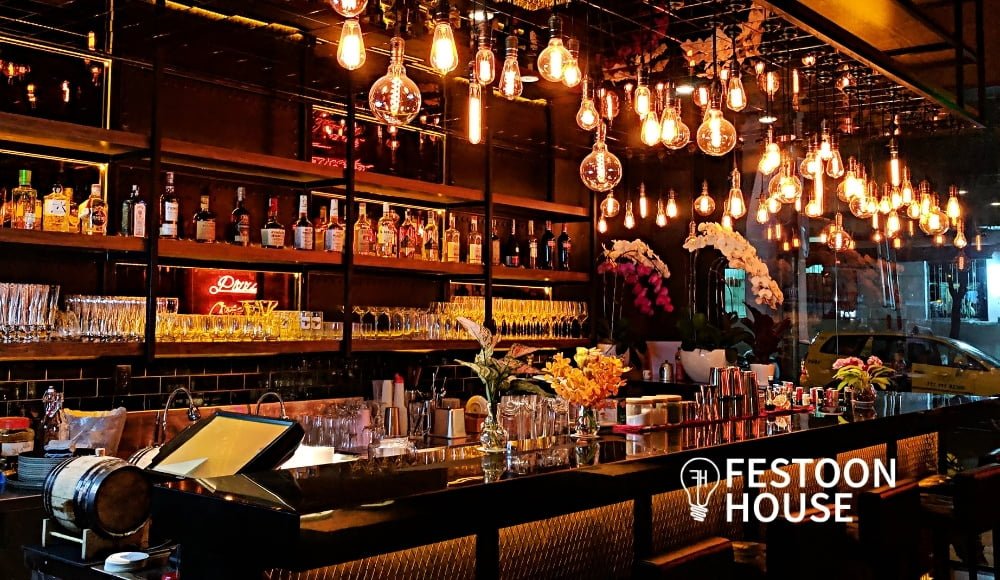
15. Illuminate Food Items Adequately
Install LED strip lighting beneath the service area counters and shelves to highlight the products and foster a warm ambiance. Choose between warm or cool white LEDs to establish the mood and align with the restaurant’s theme. Rope lighting is another ideal lighting solution. When positioned behind service area shelves, it can create a mild, understated glow, lending depth to the display and accentuating the products.
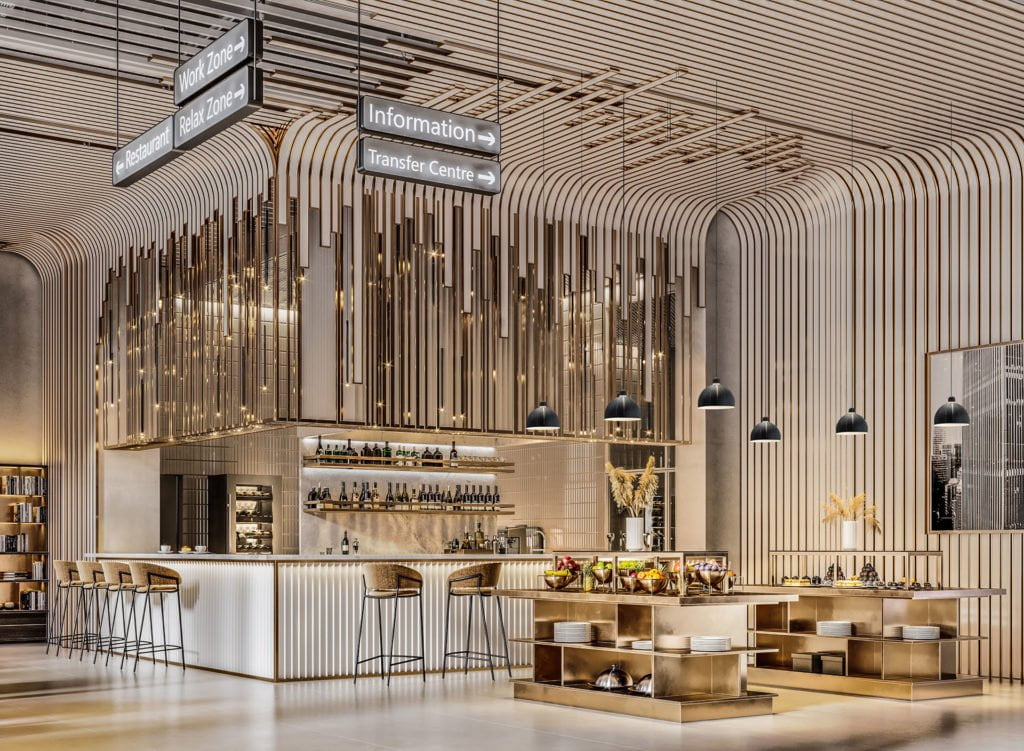
Looking for ways to brighten your restaurant tables? Here are some inventive illumination ideas to give your restaurant tables a unique glow. Explore these exciting suggestions –
16. Introduce the Charm of Candlelight Setting
The timeless allure of candlelight is an ideal means to infuse your restaurant with a romantic feel. Such setups are often associated with high-end dining establishments. However, consider opting for LED candles instead of traditional ones to avoid fire risks. These mimic the glow of real candles while offering a warm, inviting ambiance. Moreover, they come in many sizes and hues and can be programmed to flicker, replicating the look of real candles.
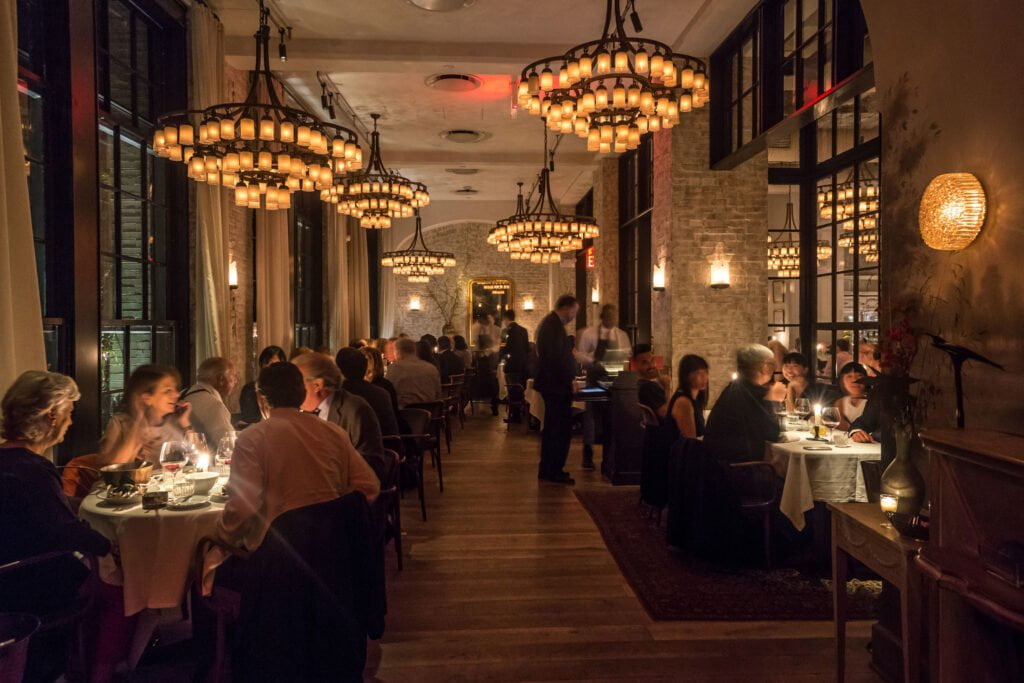
17. Edison Bulbs for a Rustic Appeal
Edison bulbs are in vogue and emit a warm, retro radiance. Hang them above tables in clusters or incorporate them into exposed bulb fixtures to create a charming, rustic ambiance.
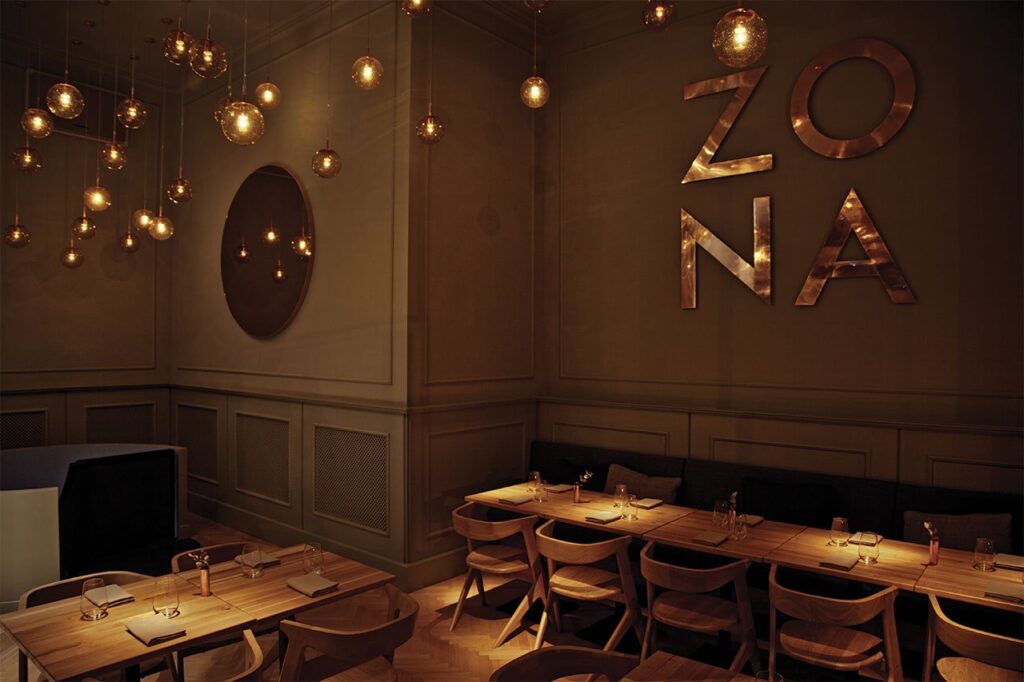
Transform your restaurant’s ambiance with these decorative lighting concepts:
18. Illuminated Menu
Incorporate menu lighting if your restaurant or kitchen includes a bar or a breakfast nook. These compact, adjustable light fixtures focus their beams onto the surface directly beneath. Using understated lights to spotlight your menu or promotional drink offers can create a snug and intimate atmosphere.
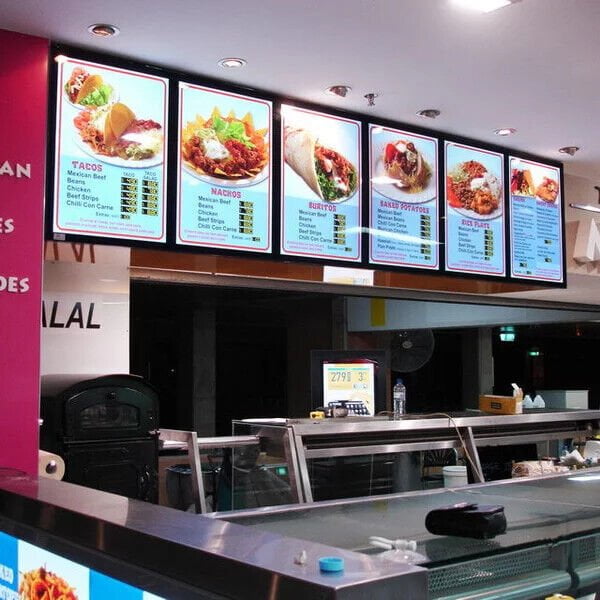
19. Track Lights for Showcasing Special Features
Track light fixtures can be an effective choice to highlight your restaurant’s unique aspects. These lights are attached to a track and can be repositioned to illuminate various directions. They are ideal for emphasizing art pieces or any distinctive features of your restaurant.
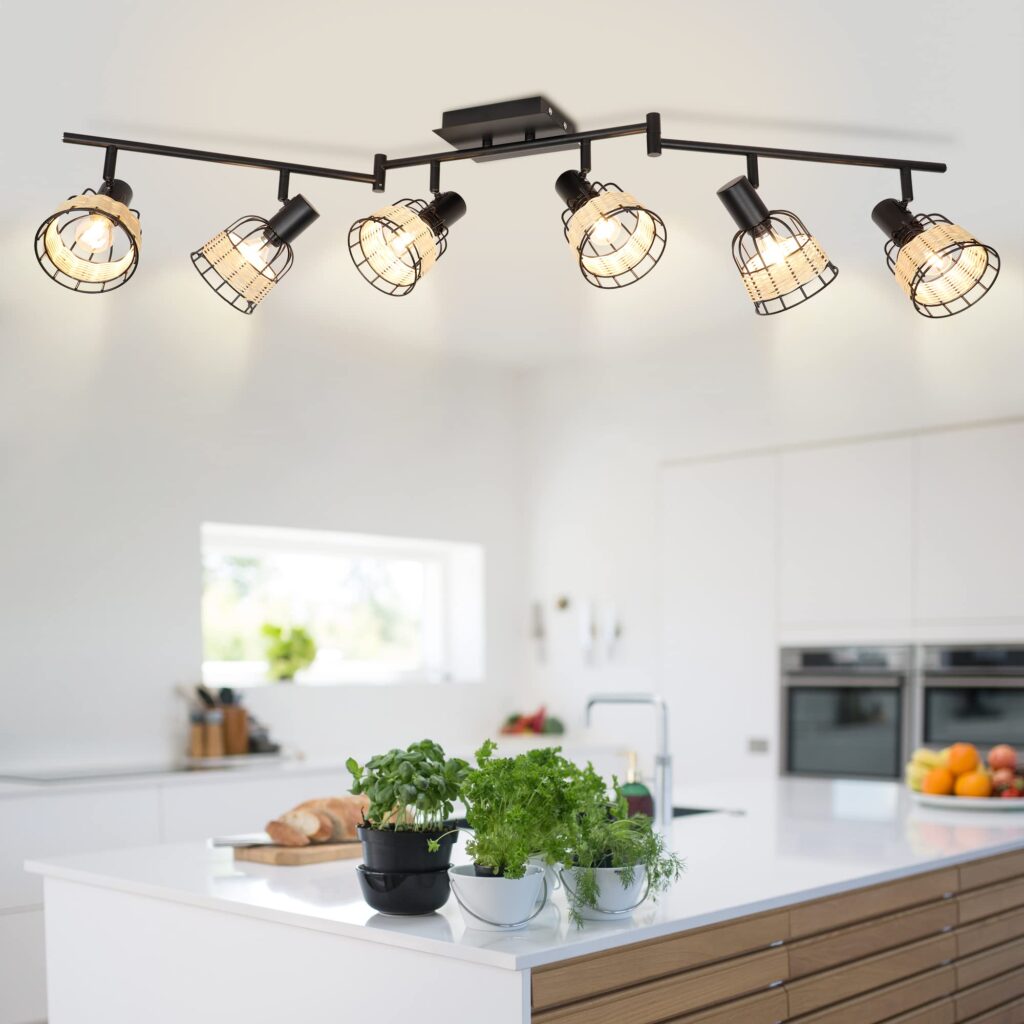
20. Harness Ceiling Fan Lighting Creatively
Consider integrating lights for practicality and style if your restaurant has ceiling fans. While numerous ceiling fans come with pre-installed light fixtures, you can customize your own using a fan light kit.
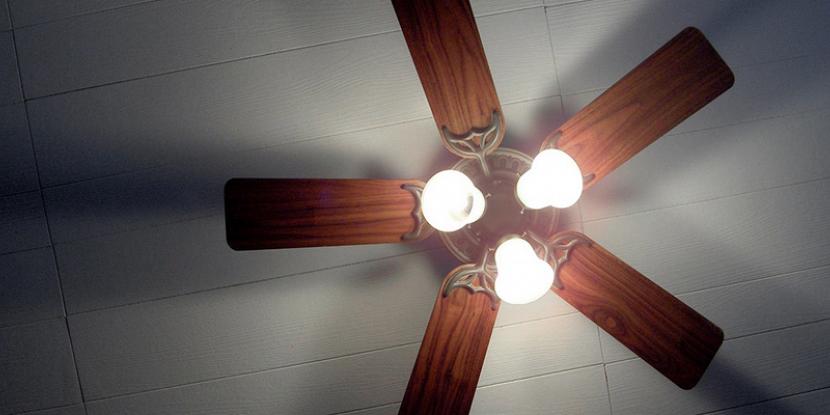
Essential Considerations for Restaurant Lighting
Illuminating your restaurant requires understanding some critical aspects, summarized below:
Determining Bright Light Zones
Usually, bright light is employed where food is prepped, such as in kitchens or preparation areas, ensuring chef safety and visibility. Besides, bright light also benefits customer zones requiring clear visibility, such as the entrance, the host stand, or the bar areas.
Recognizing Where Soft Light is Preferable
Restaurant dining spaces usually benefit from softer lighting, generating a cozy, tranquil environment for patrons, making their dining experience more enjoyable and leisurely.
Adapting Lighting Based on Time of Day
Adequate illumination in your restaurant should accentuate the varying times of day:
- Morning Illumination: For the morning, natural light works wonders. Large windows, skylights, or pale-colored walls are viable options for maximizing daylight influx. Complementing the natural light with bright, cool-toned lights can produce a rejuvenating atmosphere.
- Midday Illumination: For midday, use lighting elements like pendant or track lights that provide focused and radiant light, thereby showcasing the aesthetics of the food while fostering a cheery and dynamic ambiance.
- Evening and Night Illumination: In the evening and at night, aim for a cozy ambiance using warm, dimmed lights. Soft, ambient lighting features such as chandeliers, wall sconces, and table lamps create a comforting, inviting environment.
Selecting Lights with High CRI Ratings
Lights with higher CRI ratings reproduce colors more vibrantly, making them a great choice for a restaurant setting. Aim for lights with CRI ratings above 90.
Aligning Lighting with Restaurant Design
The illumination should harmonize with the restaurant’s overall design and ambiance. For instance, while an upscale restaurant may opt for dim, warm lighting for a relaxed, intimate feel, a quick-service restaurant might prefer bright, energetic lighting for a speedy, efficient vibe.
- Fine Dining Illumination: Lighting for fine dining should exude sophistication and intimacy. Soft, warm lighting with dimmer controls creates a soothing aura that encourages guests to take their time and enjoy their meals. Highlight the dishes with low-level and focused spotlights, providing sufficient light for menu reading.
- Fast Food Restaurant Illumination: Fast food establishments require energetic, bright lighting reflecting their pace and efficiency. Use high-intensity lighting with overhead fluorescent bulbs for a bright and welcoming feel. Bright colors and bold patterns add to the lively, energetic ambiance.
- Buffet Illumination: Buffet lighting should be bright, accentuating the food and creating a mouth-watering atmosphere. Overhead lighting features, like recessed or track lighting, can ensure every dish stands out. Warmer color temperatures can generate a cozy, inviting atmosphere.
Embracing Energy-Efficient Lighting
Choosing energy-efficient lighting options, such as LED or CFL bulbs, can cut energy costs and provide longevity compared to traditional incandescent bulbs. They also emit less heat, keeping the restaurant comfortable for guests and staff.
The Importance of Good Lighting in a Restaurant
Good lighting is key to shaping the right atmosphere, impacting diners’ experience and perception. Here’s why it’s paramount in a restaurant setting:
- Adequate illumination highlights the food presentation, revealing the dishes’ colors, textures, and details. This makes the dishes more visually appealing and delicious.
Comfortable lighting contributes to a more relaxed dining experience by reducing eye strain, headaches, and fatigue, allowing guests to savor their meals for longer. - Optimal lighting can affect diners’ perception of the food and overall experience. A pleasant lighting atmosphere can enhance their mood, satisfaction, and likelihood of returning.
- Lighting also plays a role in the restaurant’s branding and image. The correct lighting can produce a memorable and unique ambiance, setting it apart from other establishments and fostering a loyal customer base.
Final Thoughts
The influence of lighting on the dining experience at a restaurant is significant, playing a pivotal role in enhancing or diminishing it. It is vital, from setting an appropriate mood to emphasizing the delectable dishes served. Therefore, restaurant owners must give it the required attention. The correct implementation of lighting ideas in a restaurant can lift the atmosphere of your establishment, captivate your customers, and even positively affect your profit margins.
Invest in superior lighting fixtures, play around with various light sources, and collaborate with an expert in lighting design. Such steps can pave the way for a memorable dining experience that compels patrons to return for more. Thus, don’t overlook the significance of lighting in your restaurant. Begin exploring your alternatives today!
MyLikeLed is a top-notch producer of LED strips and LED neon flex. All our offerings undergo stringent quality checks in advanced laboratories to assure unparalleled quality. In addition, we provide customized options on our LED strips and neon flex. So, contact MyLikeLed at your earliest convenience for exceptional LED strip and LED neon flex solutions!
FAQs
Lighting plays a big role in how people feel while dining. Good lighting helps create a warm, welcoming mood and lets customers see their food clearly. It also makes your restaurant look more attractive and professional.
Warm white lighting, usually between 2700K to 3000K, is best for restaurants. It gives off a cozy and relaxed feeling, which makes customers feel comfortable and want to stay longer.
You can use lighting to highlight your restaurant’s best features, like wall art, plants, or unique decor. Use accent lights or spotlights to draw attention to these areas and create a stylish, balanced look.
Bright task lighting is best for kitchens. It helps chefs and staff see clearly while cooking, cleaning, and preparing food. LED panel lights or overhead fluorescent lights are common choices for kitchen use.
Yes, lighting can influence how long customers stay and how much they enjoy their meal. Soft, warm lighting can make people feel more relaxed, while harsh or overly bright lights may make the space feel uncomfortable.

Hi, I’m Xylia Xiong, a sales professional with 14 years of experience in the LED strip light industry. I specialize in providing tailored solutions, leveraging my expertise in LED products and the latest industry trends. Known for effective communication and problem-solving, I’m dedicated to helping lighting manufacturers, importers, and distributors achieve their goals.
Let’s work together to create customized solutions that exceed expectations.
Related Posts

Comparing WS2811 Vs WS2812B: Key Differences


RGB Vs RGBW Vs RGBIC Vs RGBWW Vs RGBCCT LED Strip Lights

- Call Us: +86-15920391130
- Email: info@mylikeled.com
- Office Address: No. 4 Keying road, Beitai road, Baiyun district, Guangzhou, China
- Factory: Building 12, Liandong U Valley, Guangqing Industrial Park, Shijiao Town, Qingcheng District, Qingyuan City, Guangdong, China
Copyright © 2025 – My Like Led All rights reserved.

